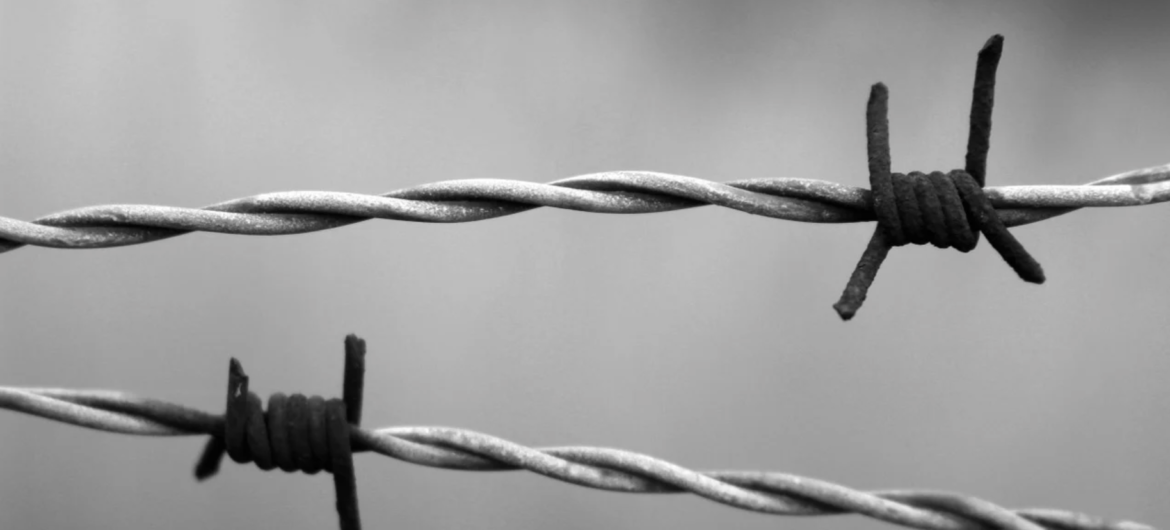Words By Rhys Mather.
In the 20 years since the beginning of the war in Afghanistan, 779 prisoners have been detained by the United States at Guantanamo Bay. Today, the New York Times reports that 39 men are still held there, only 11 of whom have been charged with war crimes. The remaining 28 have spent years, in some cases almost two decades without being told why they are there, what crimes they have committed or how long they will remain.
Opened under the Bush administration in 2002 in the aftermath of the september 11th attacks, Guantanamo bay was used to detain “enemy combatants” in order to aid Bush’s war on terror; the bay was chosen because of its legal status as US territory in Cuba, meaning the US doesn’t have to afford detainees the same rights as prisoners detailed in the US. In the following decades the bay became synonymous with torture and human rights abuses. Navy defence lawyer, Charles Swift, calls Guantanamo “the legal equivalent of outer space”.
Many Guantanamo detainees share the same stories of illegal imprisonment, torture and humiliation. Whilst detained at Guantanamo Bay in 2005 Mohamedou Ould Salahi wrote a memoir which detailed his experience. During the early 90’s Salahi fought for the then US-backed Mujahideen group in Afghanistan and trained with al-Qaeda before returning home to Germany. Salahi was living in Mauritania when he came under the suspicion of US authorities, who claimed he had recruited the hijackers responsible for the September 11th attacks – Salahi was detained at Guantanamo Bay, where he eventually confessed to being involved in multiple attacks on US soil, including 9/11. But Salahi was never sent to the US for trial, his confessions were inadmissible, because they were given under torture. He was repeatedly subjected to the CIA’s “enhanced interrogation techniques” – he was beaten, waterboarded, deprived of sleep for days, held in stress positions and sexually humiliated. The repeated interrogations took a severe psychological toll on Salahi, The New Yorker published the account of former Guantanamo Guard, Steve Wood:
“Wood heard sounds that reminded him of a child having a nightmare. He walked into the sleeping area and found Salahi lying in the fetal position, shaking. No adult in Wood’s life had ever looked so frightened and so vulnerable. He gently held Salahi’s shoulder, and said, “Everything’s O.K.” Salahi shook his head, and clicked his tongue in disagreement, but refused to speak. The next day, Wood pressed him to talk about the episode, but Salahi wouldn’t elaborate. He just said, “Dude, they fucked me up.”
Esquire reports that in 2010 Salahi filed Habeus Corpus proceedings, the right to protest illegal confinement, and the US government retracted all claims made against him. He wasn’t released until 2016, after more than 14 years. He was never charged with a crime. Salahi’s memoir, “Guantanamo diary” was published in 2015 and later adapted into a film called “the Mauritanian”. He now lives in Mauritania with his family.
The US government’s justification for treating detainees this way falls under the ongoing ‘war on terror’, a military campaign launched in the wake of 9/11 with the goal of weakening terrorist organizations to prevent further large-scale attacks. The Taliban and al-Qaeda group within Afghanistan were targeted, and when the Taliban refused to extradite Osama bin Laden, the US invaded Afghanistan with the purpose of dismantling al-Qaeda. Many men captured by US forces found themselves in Guantanamo, according to the department of defence over 200 Afghans were detained there, and several remain today. One such was Muhammad Rahim al Afghani who, according to the Miami Herald, has been detained since 2008. Despite over a decade of imprisonment Brigadier General Mark Martins says Rahim being prosecuted for war crimes is unlikely. Another example is Haroon al Afghani, an Afghan who has been at Guantanamo for over 14 years who has never been charged with a crime.
The United States has often been criticised for the treatment of Guantanamo detainees, according to the OHCHR (Office of the United Nations High Commissioner for Human Rights) in January 2021 UN human rights experts had this to say: “Guantánamo is a place of arbitrariness and abuse, a site where torture and ill-treatment was rampant and remains institutionalised, where the rule of law is effectively suspended, and where justice is denied ……. The very existence of this facility is a disgrace for the United States and the international community as a whole. Guantánamo should have been closed a long time ago,”. There have been attempts to close Guantanamo Bay, President Obama notably tried to shut down the facility multiple times but was blocked by congress. On the topic, Obama had this to say: “given my administration’s relentless pursuit of al-Qaeda’s leadership there is no justification, beyond politics, for congress to prevent us from closing a facility that should never have been opened.” With the war in Afghanistan over and Osama bin Laden long dead, calls to close the facility become increasingly notable. Afterall, several of the men in Guantanamo are prisoners from a war that has ended. According to Reuters, earlier this year President Biden launched a review of Guantanamo with aims of closing the bay, on September 23rd, 2021 NPR (National Public Radio) reported that the Biden administration published a contract to build a migrant facility at Guantanamo Bay.
Guantanamo is stubborn, refusing to close its doors even after the reason for keeping them open is gone, the name conjures images of systemic abuse and neglect, and in the end, Guantanamo is a largely fruitless endeavour. The CIA admits it’s “enhanced interrogation techniques” produced no actionable intelligence. The Senate Intelligence Committee report on CIA torture states that: “
- “The CIA’s use of its enhanced interrogation techniques was not an effective means of acquiring intelligence or gaining cooperation from detainees.”
- “The CIA’s justification for the use of its enhanced interrogation techniques rested on inaccurate claims of their effectiveness.”
- “The interrogations of CIA detainees were brutal and far worse than the CIA represented to policymakers and others.”
- “The conditions of confinement for CIA detainees were harsher than the CIA had represented to policymakers and others.”
The horror of Guantanamo has been widely published and acknowledged by the US government themselves, with Obama callously remarking “we tortured some folks” during a 2014 White House press conference. Its difficult to rationalise and justify the continued existence of Guantanamo Bay, but the US seems to have no plans of closing its doors anytime soon and for the men that remain there, there’s no telling when they will be released.




